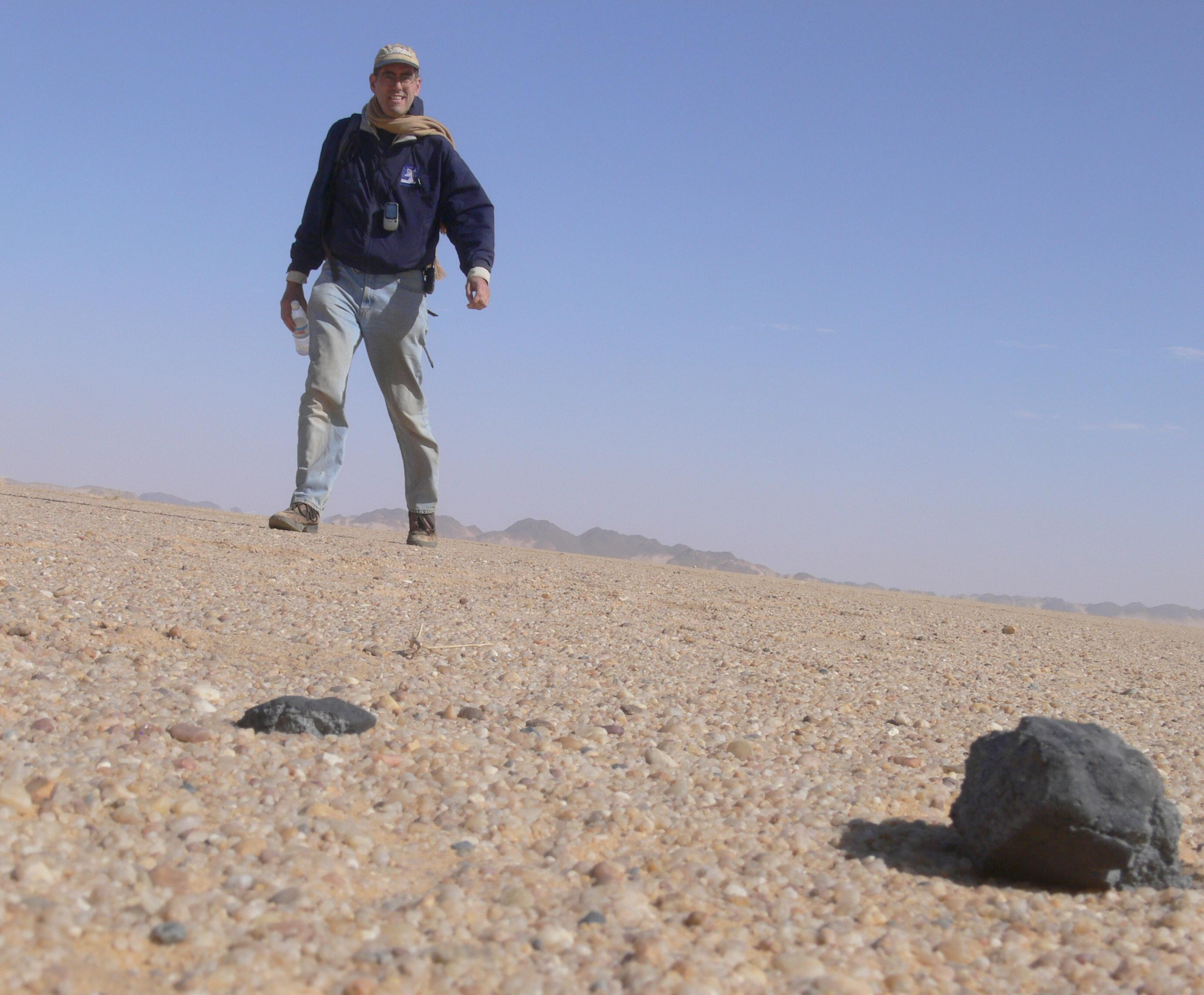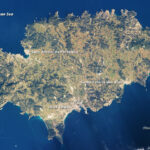Meteoroids, space rocks ranging from tiny dust particles to small asteroids, constantly journey through space. But what happens when these celestial travelers encounter Earth? Fortunately for us on the ground, our planet has a robust defense system: the atmosphere. This protective gaseous envelope is where most meteoroids dramatically burn up, preventing frequent impacts on the surface. Let’s delve into the atmospheric layer where meteoroids typically meet their fiery demise, transforming into the fleeting streaks of light we call meteors, or “shooting stars.”
The Atmospheric Layers and Meteoroid Ablation
Earth’s atmosphere is composed of several layers, each playing a crucial role in shielding our planet. From lowest to highest, these layers are the troposphere, stratosphere, mesosphere, thermosphere, and exosphere. While meteoroids can begin interacting with the atmosphere as high as the exosphere, the layer where they predominantly burn up is the mesosphere, and to some extent, the thermosphere.
As a meteoroid plunges into the atmosphere at speeds ranging from tens of thousands of miles per hour, it encounters increasing air resistance. This isn’t like gently floating in air; at these speeds, the friction is immense. The air in front of the meteoroid is compressed and heated to extremely high temperatures, often reaching thousands of degrees Fahrenheit.
This intense heat causes the surface of the meteoroid to vaporize and ionize in a process called ablation. Essentially, the meteoroid is burning up from the outside in. The glowing trail we see as a meteor is not the meteoroid itself burning, but rather the superheated air and the incandescent vaporized material shedding off the meteoroid’s surface.
 Peter Jenniskens with 2008TC3 meteorite found in Nubian Desert, Sudan.
Peter Jenniskens with 2008TC3 meteorite found in Nubian Desert, Sudan.
Peter Jenniskens, a meteor astronomer from NASA and the SETI Institute, showcases a fragment of the 2008TC3 meteorite discovered in the Nubian Desert. This meteorite originated from an SUV-sized asteroid that fragmented upon entering Earth’s atmosphere.
Most meteoroids are relatively small, often no larger than a grain of sand or a pebble. These smaller particles completely vaporize in the mesosphere and thermosphere, high above the Earth’s surface, posing no threat. They become part of the estimated 48.5 tons (44,000 kilograms) of meteoritic material that falls on Earth daily, mostly as microscopic dust.
From Meteoroids to Meteors and Meteor Showers
The fiery spectacle of meteoroid ablation is what we commonly know as a meteor. The brighter ones, sometimes outshining even Venus, are called fireballs. These luminous events are a testament to the atmosphere’s effectiveness as a natural shield.
When Earth passes through the debris trails left by comets or asteroids, we experience meteor showers. These trails are filled with countless small meteoroids. As Earth intersects these trails, we witness an increased number of meteors radiating from a common point in the sky. Famous meteor showers like the Perseids, Leonids, and Geminids are annual celestial events, providing stunning displays of atmospheric protection in action.
The table below outlines some major meteor showers, their peak viewing times, and their parent bodies:
| Major Meteor Streams | 2025 Peak Viewing Night (may vary by a few days)* | Rate Per Hour** | Parent Body (Asteroid or Comet) |
|---|---|---|---|
| Lyrids | April 21-22, 2025 | 18 | Comet C/1861 G1 |
| Eta Aquarids | May 3-4, 2025 | 50 | Comet 1P/Halley |
| Southern Delta Aquariids | July 29-30, 2025 | 25 | Comet 96P/Machholz (not confirmed) |
| Perseids | Aug. 12-13, 2025 | 100 | Comet 109P/Swift-Tuttle |
| Orionids | Oct. 22-23, 2025 | 20 | Comet 1P/Halley |
| Leonids | Nov. 16-17, 2025 | 15 | Comet 55P/Tempel-Tuttle |
| Geminids | Dec. 12-13, 2025 | 150 | (3200) Phaethon |
| Quadrantids | Jan. 3-4, 2026 | 120 | (196256) 2003 EH1 |
Source: American Meteor Society* For observers in the northern hemisphere.** Estimated rate per hour in under perfect conditions, based on activity in recent years.
When Meteoroids Survive: Meteorites
While the vast majority of meteoroids are destroyed in the atmosphere, larger ones can survive the fiery plunge. When a meteoroid makes it through the atmosphere and reaches the ground, it is then called a meteorite.
Objects larger than a football field are likely to fragment violently in the atmosphere, creating spectacular airbursts. However, even for smaller meteoroids that survive to the ground as meteorites, a significant portion is ablated away during atmospheric entry. Typically, less than 5% of the original meteoroid mass reaches the Earth’s surface.
Meteorites offer invaluable insights into the early solar system. Studying them allows scientists to analyze the building blocks of planets, understand asteroid composition, and investigate the history of our cosmic neighborhood.
A student from the University of Khartoum in Sudan participates in a meteorite search expedition in the desert. Deserts, both sandy and icy, are prime locations for meteorite discovery due to the contrast between the dark meteorites and the surrounding terrain.
The Importance of Atmospheric Protection
The layer where meteoroids die out—primarily the mesosphere—is critical for life on Earth. Without this atmospheric shield, our planet would be bombarded far more frequently by space debris. While large impacts still occur on geological timescales, the constant ablation of smaller meteoroids in the atmosphere significantly reduces the number of impacts and the overall risk to the surface.
Events like the Chelyabinsk meteor in 2013, and the Tunguska event of 1908, serve as reminders of the energy carried by even relatively small space rocks. These events, though impactful, could have been far more devastating had the meteoroids not lost a significant amount of mass and energy in the atmosphere.
The persistent vapor trail of the Chelyabinsk meteor as it traversed the sky over Russia in 2013. This event highlighted the potential impact energy of even relatively small meteoroids and the protective role of Earth’s atmosphere.
In conclusion, the mesosphere and thermosphere are the crucial atmospheric layers where countless meteoroids are vaporized, safeguarding Earth from constant bombardment. This natural defense mechanism allows us to enjoy the beauty of meteors and meteor showers while minimizing the risk of impact from space debris. The study of meteoroids and meteorites continues to provide valuable insights into our solar system’s history and the dynamic processes that shape our planet.

